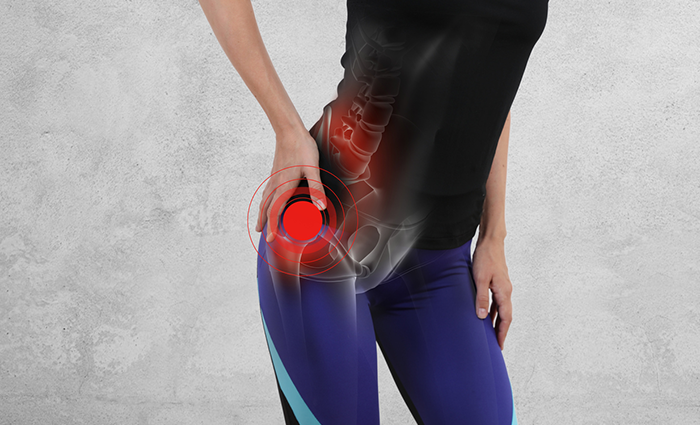The Role Of Physical Therapy In Hip Pain

Hip pain is known to be the most prevalent and debilitating musculoskeletal condition that affects people of diverse age groups and backgrounds. This type of pain and discomfort can significantly destroy our mobility, quality of life, and overall well-being. The understanding of hip pain, its causes, and symptoms provides comprehensive guidance and a balanced approach to its diagnosis, treatment, and management.
WHAT CAUSES HIP PAIN?
Hip pain can be caused by many reasons, and the most common include:
- Osteoarthritis is the most common reason behind hip pain, especially in elders. It results from the gradual wear and tear of the hip joint’s cartilage, leading to pain, stiffness, and reduced mobility.
- Other causes include hip bursitis and hip tendinitis. Hip bursitis occurs when the fluid-filled sacs (bursae) that cushion the hip joint become inflamed due to repetitive movements and injuries. While tendinitis is an inflammation of the tendons that connect the muscles to the hip joint, and it results from overuse or strain.
- Hip fractures are another reason why your hip hurts. Fractures of the hip are often caused by falls or accidents and can result in excruciating hip pain that demands immediate medical attention.
- Lastly, straining or overexerting the muscles around the hip joint is another common reason behind hip pain. This is more common in athletes and people who often participate in physically demanding activities.
SYMPTOMS OF HIP PAIN
The symptoms of hip pain usually depend on the underlying cause and typically include:
- Pain or discomfort in the hip joint, often radiating to the groin, thigh, or buttocks
- Pain worsens by weight-bearing activities, such as walking or climbing stairs
- Reduced range of motion
- Stiffness, swelling, and tenderness in the hip area.
- Difficulty with simple tasks like standing up from a sitting position, climbing stairs, putting on shoes, etc.
DIAGNOSIS OF HIP PAIN
Diagnosis of any health condition is crucial for its effective treatment and management. Like other ailments, a physical therapist or healthcare professional will typically perform the following steps to confirm the cause of hip pain.
- Diagnosis begins with the evaluation of your medical history. Your doctor will inquire about your past injuries, activities, and other factors that may contribute to the pain.
- The second step includes a thorough physical examination. This will help in pinpointing the location and nature of the pain, along with the signs of swelling, inflammation, or deformity.
- To further confirm the condition, your doctor may order imaging tests such as X-rays, MRI scans, and CT scans. These scans will help in getting a detailed look at the hip joint and identify any structural issues.
- Besides, blood tests are also suggested to rule out certain medical conditions that may mimic hip pain.
TREATMENT OF HIP PAIN
Treatment of the hip pain is based on the causes, symptoms, and the accurate diagnosis of the condition. It often involves interventions such as medication, injections, or, in severe cases, surgery. However, physical therapy is the treatment of choice for hip pain when dealing with osteoarthritis, muscle strains, post-surgery rehabilitation, bursitis, tendinitis, post-traumatic injuries, gait issues, and chronic hip pain. Overall, physical therapy is a crucial part of a comprehensive treatment plan for the management of all sorts of hip pain.
PHYSICAL THERAPY FOR HIP PAIN
Physical therapy is a fundamental component of managing hip pain because of the following benefits:
- Pain Management: A physical therapist uses different specialized techniques such as manual therapy, exercises, and modalities like TENS, heat pads, or ice therapy, to reduce pain, swelling, and stiffness.
- Improved Mobility: Hip pain often leads to limited mobility but through physical therapy and a customized exercise plan, you can enhance joint flexibility, strength, and function.
- Functional Restoration: The main focus of physical therapy is on functional restoration. It involves regaining the ability to perform everyday tasks and activities without discomfort.
- Education: Another benefit of physical therapy is the provision of education to patients on proper posture, body mechanics, and lifestyle modifications to prevent future hip pain. Moreover, a physical therapist helps patients learn how to prevent future hip injuries or pain through exercise, stretching, and proper ergonomics.
